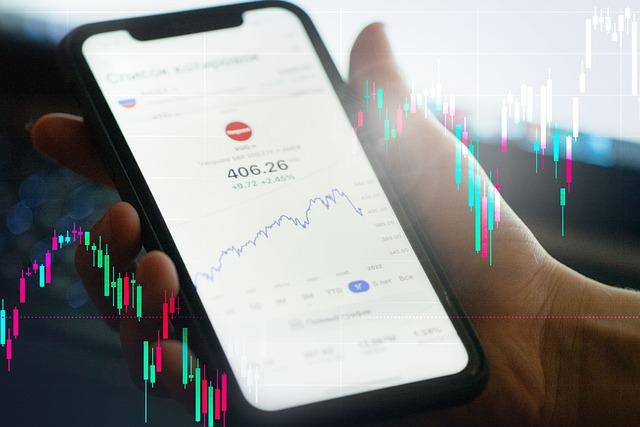Are you tired of the traditional “buy and hold” strategy for your investments? Are you looking for a more dynamic approach to managing your portfolio?
Look no further than active investment management! With the goal of outperforming the market through strategic and timely buying and selling of securities, active management has gained popularity in recent years.
In this blog post, we’ll explore the ins and outs of active investment management and help you determine if it’s the right strategy for you. So strap in and get ready to take control of your investments like never before!
What is Active Investment Management?

Active investment management is a strategy where an investment manager or team actively buys and sells securities in an effort to outperform the market or a specific benchmark. This approach differs from a passive strategy, where investments are typically held long-term and follow the market’s ups and downs.
Active managers use various methods to analyze and identify opportunities for investment, such as fundamental analysis, technical analysis, and quantitative analysis. They may also make use of market trends, news events, and economic data to make informed decisions about when to buy or sell securities.
The goal of active investment management is to generate higher returns than a passive approach by taking advantage of market inefficiencies and short-term opportunities. However, this approach typically involves higher fees and requires more time and expertise to execute effectively. Ultimately, the decision to use active investment management should be based on an investor’s financial goals, risk tolerance, and investment preferences.
The Benefits of Active Investment Management
Active investment management can offer several potential benefits for investors who are willing to accept the risks and costs associated with this approach.
Here are some of the benefits that active investment management can provide:
Potential for higher returns
Active managers seek to outperform the market by identifying undervalued securities, market trends, or other opportunities that can generate higher returns than passive strategies.
Flexibility and customization
Active managers have the flexibility to adjust their portfolios based on changing market conditions and individual investor needs, such as risk tolerance or investment preferences.
Risk management
Active managers may be able to mitigate risks by diversifying across a range of securities or by using hedging strategies to protect against market downturns.
Access to specialized expertise
Active managers typically have specialized knowledge and experience in specific industries or sectors, which can provide insights and opportunities that passive strategies may overlook.
Potential tax benefits
Active managers may be able to generate tax benefits by managing their portfolios to minimize tax liabilities, such as through tax-loss harvesting.
Strategies for Active Investment Management

Active investment management involves a range of strategies that are designed to generate higher returns than passive strategies by taking advantage of market inefficiencies, trends, or opportunities.
Here are some of the most common strategies used by active investment managers:
Fundamental analysis
This strategy involves analyzing a company’s financial statements, management team, industry trends, and other factors to determine whether its stock is undervalued or overvalued. Active managers may use a range of tools and models to conduct fundamental analysis, such as discounted cash flow analysis or earnings forecasting.
Technical analysis
This strategy involves analyzing a security’s price and volume data to identify trends or patterns that can help predict future price movements. Technical analysts may use a range of charts and indicators to identify buy and sell signals, such as moving averages or relative strength indicators.
Quantitative analysis
This strategy involves using statistical models and algorithms to identify patterns and opportunities in the market. Quantitative analysts may use machine learning or other advanced techniques to analyze vast amounts of data and identify market inefficiencies or mispricings.
Sector rotation
This strategy involves shifting investments between different sectors of the market based on economic conditions, industry trends, or other factors. Active managers may use sector rotation to take advantage of opportunities in high-growth sectors or to protect against downturns in specific industries.
Value investing
This strategy involves identifying stocks that are trading at a discount to their intrinsic value and holding them for the long term. Value investors may focus on companies with strong fundamentals, stable earnings, or other factors that suggest they are undervalued by the market.
Active investment management involves a range of strategies and approaches, and the most effective strategy for a particular investor will depend on their financial goals, risk tolerance, and investment preferences.
Building an Active Investment Portfolio
Building an active investment portfolio requires careful planning and research to identify the right mix of investments that can generate higher returns than a passive strategy. Here are some steps to consider when building an active investment portfolio:
Define your investment goals and risk tolerance
Before selecting investments, it’s important to have a clear understanding of your financial goals and risk tolerance. This can help guide your investment decisions and ensure that you’re comfortable with the level of risk in your portfolio.
Choose a strategy that aligns with your goals
Once you have clearly understood your goals and risk tolerance, you are able to choose an active investment strategy that aligns with your objectives. For example, if you’re seeking long-term growth, a value investing strategy may be appropriate, while a sector rotation strategy may be better suited for shorter-term goals.
Diversify your portfolio
Active investment portfolios should be diversified across a range of investments to minimize risks and maximize returns. This can include a mix of stocks, bonds, commodities, and other asset classes, as well as investments in different industries or sectors.
Conduct thorough research
Active investment management requires careful research and analysis to identify undervalued securities or market inefficiencies. This can involve analyzing financial statements, industry trends, economic data, and other factors that may affect the performance of your investments.
Monitor and adjust your portfolio
Active investment portfolios require ongoing monitoring and adjustment to ensure that they continue to align with your goals and risk tolerance. This may involve buying or selling securities based on changes in market conditions, economic data, or other factors.
Overall, building an active investment portfolio requires a disciplined approach that balances risk and reward while aligning with your long-term financial goals. By carefully selecting investments and staying vigilant to market trends and opportunities, active investors can potentially generate higher returns than a passive approach.
Active Investment Management Products

Active investment management products come in a variety of forms, each offering different features and benefits to investors. Here are some of the most common types of active investment management products:
Mutual funds
Mutual funds are one of the major investment vehicles which can easily pool money from multiple resources to purchase a diversified portfolio of securities. Active mutual funds are managed by professional investment managers who make investment decisions based on their research and analysis of market trends and opportunities.
Exchange-traded funds (ETFs)
ETFs are similar to mutual funds in that they offer exposure to a diversified portfolio of securities. However, ETFs trade on stock exchanges like individual stocks, providing investors with greater flexibility and liquidity. Active ETFs are managed by investment professionals who actively manage the fund’s portfolio to generate higher returns.
Hedge funds
Hedge funds are private investment vehicles that typically require high minimum investments and are only available to accredited investors. Hedge funds use a range of investment strategies, such as long/short equity, event-driven, or global macro, to generate higher returns than traditional investments. Hedge funds are actively managed and may use leverage or derivatives to enhance returns.
Separately managed accounts (SMAs)
SMAs are investment accounts that are managed by professional investment managers on behalf of individual investors. SMAs offer customized portfolios tailored to the investor’s investment objectives and risk tolerance, with the added benefit of tax efficiency and transparency.
Private Equity
Private equity funds invest in private companies, typically with the goal of taking a controlling stake or exiting through an IPO or acquisition. Private equity funds are actively managed and may provide higher returns than public markets, but are also associated with higher risks and longer lock-up periods.
Investors should carefully consider their financial goals and risk tolerance before choosing an active investment management product. Each product has its own unique features and benefits, as well as costs and risks that should be carefully evaluated.
Active Investment Management for Retirement
Active investment management can be an effective strategy for investors looking to build a retirement portfolio that generates higher returns than a passive strategy. Here are some considerations for using active investment management for retirement:
Start early and plan for the long-term
Active investment management is most effective when used as a long-term strategy. Starting early and staying committed to the strategy can help investors ride out short-term market fluctuations and take advantage of longer-term trends and opportunities.
Focus on asset allocation:
Asset allocation is the process of dividing a portfolio among different asset classes, such as stocks, bonds, and cash. Active investors can use asset allocation strategies to balance risk and reward, and potentially generate higher returns than a passive strategy.
Diversify your portfolio
Diversification is the practice of investing in a range of assets to minimize risk. Active investors can use diversification strategies to invest in a variety of stocks, bonds, and other asset classes, as well as across different sectors and industries.
Conduct thorough research
Active investment management requires careful research and analysis to identify undervalued securities or market inefficiencies. This can involve analyzing financial statements, industry trends, economic data, and other factors that may affect the performance of your investments.
Monitor and adjust your portfolio
Active investment portfolios require ongoing monitoring and adjustment to ensure that they continue to align with your goals and risk tolerance. This may involve buying or selling securities based on changes in market conditions, economic data, or other factors.
Risks Associated with Active Investment Management

Active investment management can potentially generate higher returns than passive investment strategies, but it also comes with greater risks. Here are some of the key risks associated with active investment management:
Market risk
Active investment management involves making investment decisions based on market trends and conditions. If the market takes a downturn, the value of an active investment portfolio could decline.
Manager risk
Active investment managers may make poor investment decisions or fail to adjust the portfolio in response to changing market conditions. This can lead to underperformance and potential losses.
Sector and industry risk
Active investment portfolios may be heavily invested in certain sectors or industries, which can lead to higher risks if those sectors or industries experience downturns or underperformance.
Concentration risk
Active investment portfolios may be heavily invested in a small number of securities, which can lead to higher risks if those securities underperform or decline in value.
Liquidity risk
Active investment portfolios may invest in illiquid securities or asset classes, which can make it difficult to sell those investments during market downturns or other periods of market stress.
Cost risk
Active investment management typically involves higher costs than passive investment strategies, such as management fees and transaction costs. These costs can erode investment returns and reduce the overall effectiveness of the strategy.
Investors should carefully consider the risks associated with active investment management before choosing to use this strategy. It’s important to work with a qualified financial advisor who can help develop a personalized investment strategy that aligns with your financial goals, risk tolerance, and investment time horizon.
Active investment management vs passive investment management
Active investment management and passive investment management are two approaches to managing investment portfolios, each with its own advantages and disadvantages.
Active investment management involves actively selecting investments and making trades based on research, analysis, and market trends with the aim of outperforming the market. This approach typically involves higher management fees and transaction costs, as well as greater risks associated with investment decisions made by the portfolio manager.
Passive investment management, on the other hand, involves tracking a market index or benchmark, such as the S&P 500, and holding a diversified portfolio of securities that mirror that index. This approach typically involves lower fees and less risk associated with investment decisions made by the portfolio manager, but may also limit potential returns compared to active management.
There is an ongoing debate about which approach is better for investors. Some argue that active management can outperform the market and generate higher returns, while others argue that the costs and risks associated with active management outweigh any potential benefits. Conversely, some argue that passive management is a safer and more cost-effective approach that is likely to provide better long-term results due to the difficulty of consistently outperforming the market.
Ultimately, the choice between active and passive investment management will depend on an individual’s financial goals, risk tolerance, and investment time horizon. It is important to work with a qualified financial advisor to determine which approach is best suited for your individual circumstances.
Conclusion
Active investment management can be an effective strategy for investors seeking potentially higher returns than passive investment management. This approach involves making investment decisions based on market trends and conditions, with the goal of outperforming the market. While active management comes with greater risks and higher costs than passive management, it can also offer the potential for greater returns.
However, it is important to carefully consider the risks associated with active management, including market risk, manager risk, sector and industry risk, concentration risk, liquidity risk, and cost risk. Working with a qualified financial advisor can help investors develop a personalized investment strategy that aligns with their financial goals, risk tolerance, and investment time horizon.
Ultimately, the choice between active and passive management will depend on an individual’s unique circumstances and investment objectives. By staying informed about the benefits and risks of both approaches, investors can make informed decisions about how to manage their portfolios and pursue their long-term financial goals.
You may also like to read

